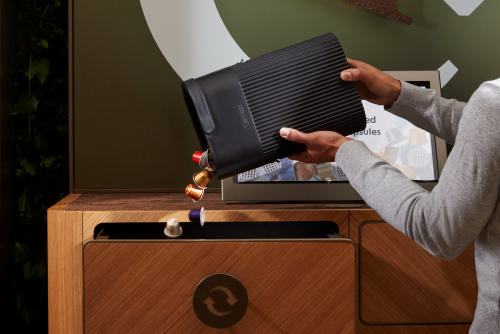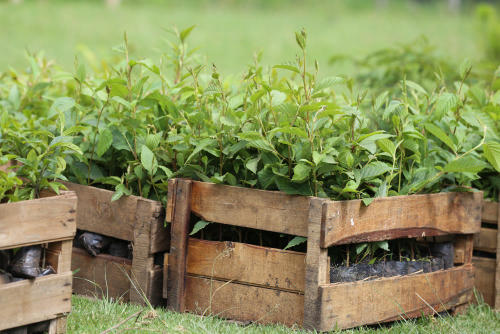
PORTIONED COFFEE
PORTIONED - A CLEVER CHOICE
Ever wonder if your morning Nespresso is a good choice environmentally? Research* shows that portioned coffee can actually be better for the environment than filter coffee. Why? This is because when brewing a Nespresso cup of coffee, you only use the precise amount of coffee and hot water needed for each cup. This avoids coffee, water and energy wastage.
Some can think that portioned coffee can be a bad choice for the environment compared to other coffee solutions. But, to understand the environmental impact of a product, we have to look at the product's whole value chain. From bean to cup.
For any coffee, the biggest environmental impact happens at home when you brew a cup of coffee, and when the coffee is grown and harvested. Packaging is only the third largest contributor. That’s why using a precise amount of coffee inside a capsule and not wasting any coffee, combined with promoting sustainable farming practices and using energy efficient appliances are key to making a sustainable cup of coffee.
*The Positive Cup report 2020, read more here.

Did you know?
• We have reduced the carbon footprint of a cup of Nespresso original by 24% since 2009*.
• Today our original capsules are made from 80% recycled aluminum and the vertuo capsules are made from 85% recycled aluminium.
• In 2020 our investment in recycling operations totalled more than 59 million euros.
Can Nespresso coffee be a sustainable choice?
Independent experts – using what’s called a Life Cycle Assessment* – have found that portioned coffee can have a similar environmental impact – or an even better performance – than other ways of making coffee. Why? Well, with a precision consumption system like Nespresso, you use just the right amount of coffee, water and energy needed to brew a single cup. With other brewing methods it’s easy to over-dose your coffee, brew more than you end up drinking, or leave the hot plate running for longer than necessary.
*LCA research, read more here.


Why does it matter so much how I prepare my coffee?
To understand the environmental impact of a product, we must look at the product's whole value chain. From bean to cup. You might be surprised to hear that coffee farming and home consumption are the two largest contributors to a cup of coffee’s carbon footprint – packaging only comes third. That’s why promoting sustainable farming practices, not wasting any coffee, and using energy-efficient machines are critical to reducing your cup of coffee’s carbon footprint. At Nespresso, we address these aspects through our sustainable coffee sourcing program – the Nespresso AAA Sustainable Quality™ Program – and by ensuring all our new Nespresso machine ranges are equipped with an automatic stand-by mode or power-off function to minimize energy waste.

